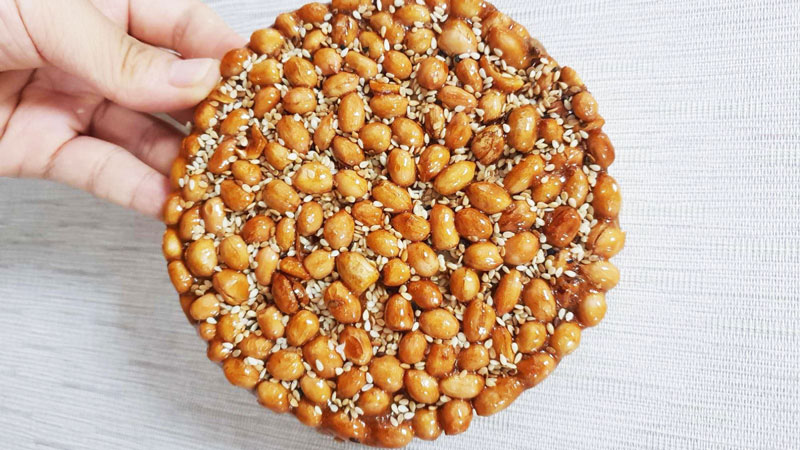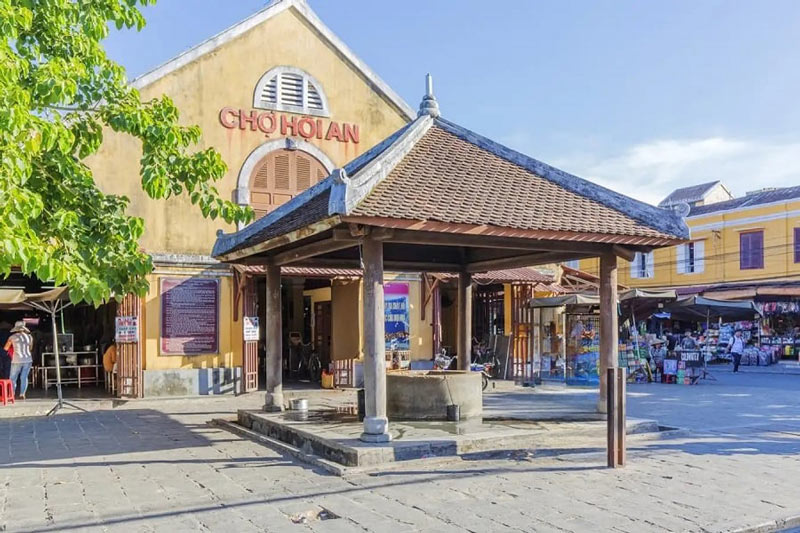Vietnam's culinary landscape is a vibrant tapestry of flavors and traditions, reflecting the nation's rich history and diverse regions. Among these delights, Vietnamese candies stand out as a uniquely sweet facet of this rich culinary culture. These treats are not only delicious but also hold a significant place in Vietnam's cultural and historical contexts, offering a taste of the past through every bite. From traditional recipes passed down through generations to innovative new creations, Vietnamese candies provide a delectable journey through the country's heritage and culinary creativity.

A staple in the Mekong Delta region, Compe candies are a vivid illustration of Vietnamese culinary simplicity and flavor. The preparation involves boiling coconut milk with sugar and sometimes adding flavors such as durian or pandan, resulting in a chewy, caramel-like texture. Traditionally wrapped in edible rice paper and then in a thin layer of paper for presentation, these candies are not just treats; they're a part of the local heritage, often served during festive occasions or as a welcoming gesture to guests.
Vietnamese peanut candies vary widely but primarily include peanut brittle and peanut candies rolled with sesame seeds. The brittle version is a hard candy made from caramelized sugar and peanuts, offering a crunchy texture. The softer variety combines roasted peanuts with sesame seeds, providing a chewy texture and a nutty flavor. Both types are highly regarded for their protein content and are a common snack during the Lunar New Year celebrations.
Known for their pungent and spicy flavor, ginger candies are a traditional remedy for cold and flu symptoms in Vietnam, reflecting the deep-rooted belief in the medicinal properties of ginger. These candies are particularly popular during Tet, the Vietnamese New Year, symbolizing a wish for a healthy year ahead. They are made by cooking ginger in sugar until crystallized and are enjoyed both for their health benefits and their warming, spicy kick.
Vietnam's rich pantry also includes candies made from other local ingredients like sesame, mung bean, and rice. Sesame candies, similar in texture to brittle but with a deeper, nuttier flavor, and mung bean pastes, often wrapped in glutinous rice paper, are both traditional sweets that reflect the local agriculture and culinary creativity.
The influx of Western culture brought a variety of candies to Vietnam, including hard candies, chocolates, and lollipops. These treats have been embraced with a local twist, incorporating local flavors and ingredients but maintaining the original Western candy styles.
Fusion candies represent a delicious blend of traditional Vietnamese flavors with modern candy-making techniques. Examples include chocolate bars infused with lychee or mango spices, and caramels seasoned with lemongrass or salt and pepper. These innovative treats are gaining popularity, particularly among younger generations and tourists looking for a unique taste experience.
Certain regions of Vietnam are famous for specific candies, reflecting the local culture and ingredients. For example, Hanoi is known for its green rice flake cakes, while central Vietnam has a penchant for spicy ginger candies. These regional specialties add a rich diversity to the country’s confectionary landscape, making each locality’s candy culture unique.

Vietnamese candy, with its diverse flavors and unique ingredients, can be found in various places across Vietnam, each offering a different experience for candy lovers. Whether you’re looking for artisanal treats or mass-produced sweets, there’s a venue that caters to every preference.
One of the most enchanting places to find Vietnamese candy is in the country's traditional markets. These bustling hubs are not just shopping destinations; they are vibrant, colorful tapestries of local culture and culinary traditions. As you navigate through the narrow aisles, you're greeted by the enticing aromas of fresh fruits and spices, which are often ingredients in the candies themselves. Vendors line the walkways with stalls bursting with assorted candies like kẹo dừa (coconut candy), kẹo mè xửng (sesame candy), and the ever-popular kẹo lạc (peanut brittle). Each stall offers a glimpse into the rich tapestry of Vietnamese sweets, often accompanied by stories of their origins shared by the vendors. Shopping here is an interactive experience, allowing you to sample and learn about the candies before making a purchase.
For those with a specific taste or looking for something a little more refined, specialty candy stores are your next stop. These shops are dedicated to the craft of candy-making, specializing in both traditional and contemporary sweets. Here, the focus is on quality and uniqueness, often featuring handcrafted candies that are hard to find elsewhere. These stores provide a more curated experience, where each type of candy is given its own spotlight, often beautifully packaged and ready to serve as a delightful gift. Specialty candy stores are treasure troves for connoisseurs seeking to explore the profound depths of Vietnamese confectionery art.
If convenience is key, supermarkets across Vietnam also stock a wide range of Vietnamese candies. While the atmosphere is less personal than markets or specialty stores, the availability is unmatched. Supermarkets offer everything from the artisanal to the commercial, making it easy to grab a bag of mass-produced kẹo gừng (ginger candy) or kẹo chuối (banana candy) off the shelves. This is a great option for those looking to quickly acquaint themselves with the basic range of what Vietnamese candy has to offer.

Vietnamese candy stands out in the global confectionery landscape with its unique blend of flavors and ingredients that mirror the country's rich culinary heritage. From the subtly sweet and chewy bánh đậu xanh (mung bean cake) to the bold and aromatic kẹo dừa (coconut candy), each variety tells a story of regional ingredients and traditional methods handed down through generations.
Candy in Vietnam is more than just a treat; it's a vibrant part of the nation's cultural fabric. During festive celebrations such as Tết (Vietnamese New Year) and the Mid-Autumn Festival, candies serve not only as desserts but also as symbols of prosperity and happiness offered to guests and placed on altars. These sweets foster a sense of community and continuity, linking the present with the past and future through shared tastes and experiences.
Exploring Vietnamese candy is an invitation to experience the delightful and diverse flavors of Vietnam. Whether you are seeking a taste of nostalgia or a new culinary adventure, Vietnamese sweets provide a fascinating insight into the country's traditions and a delectable treat for the senses. So, delve into the world of Vietnamese confections and let your palate celebrate the rich tapestry of flavors that Vietnam has to offer.
From sweet to surprising, Vietnamese candy offers a delightful glimpse into the country's unique tastes. Want to discover more of Vietnam's hidden treasures? Our Best of Vietnam tour takes you beyond the guidebooks and into the authentic heart of the nation.
Explore the essence of Vietnam through our tailored tour packages. Each private tour is carefully designed to match your individual tastes, providing a unique and personal journey through Vietnam's secret wonders and cultural riches.